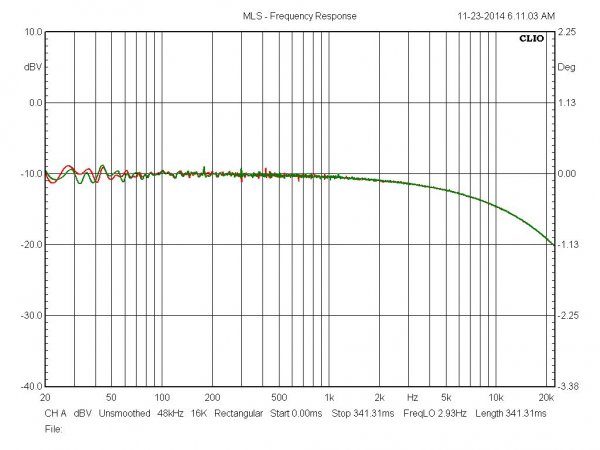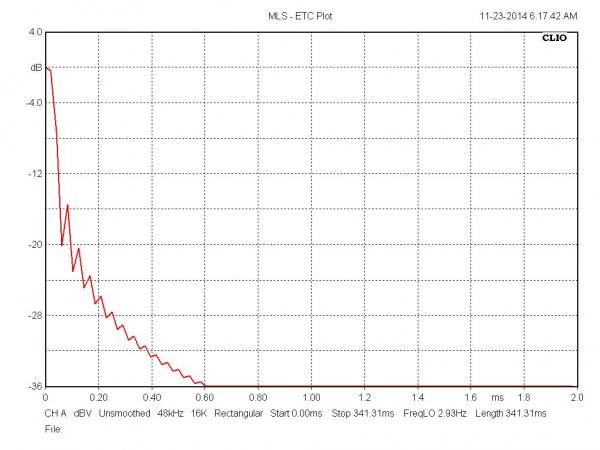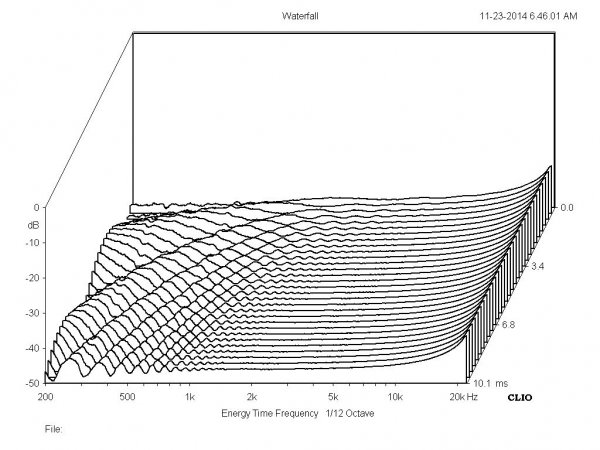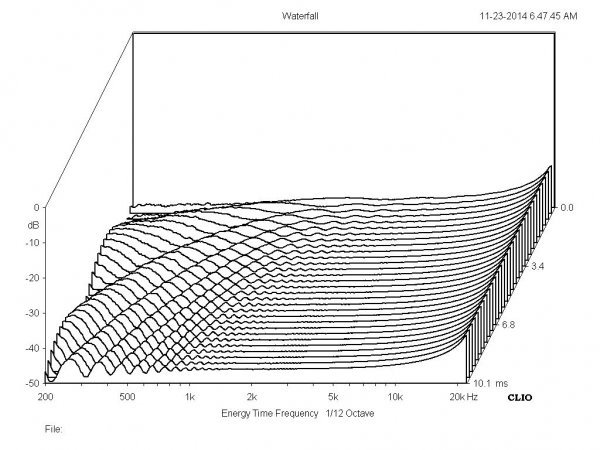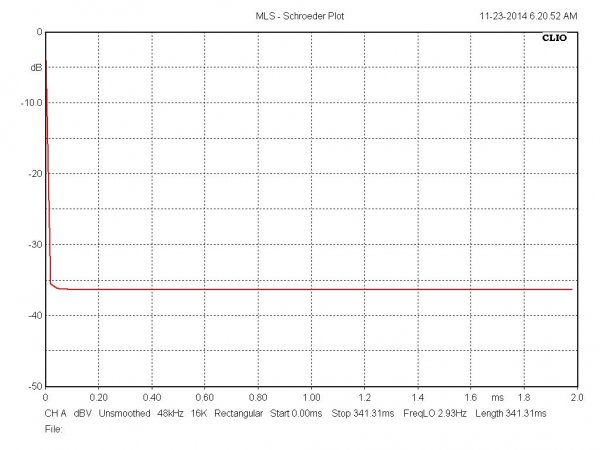Cable burn-in: Is it real or imagined?
- Thread starter Johnny Vinyl
- Start date
You are using an out of date browser. It may not display this or other websites correctly.
You should upgrade or use an alternative browser.
You should upgrade or use an alternative browser.
Steve Williams
Site Founder, Site Co-Owner, Administrator
Where should I post the instructions?
maybe here
http://www.whatsbestforum.com/forumdisplay.php?305-Power
Just out of curiosity I will be taking frequency response measurements of my system with Litz wire speaker cables when new and after burn-in. The Litz wire has a ton of surface area and burn-in is very dramatic so I do expect to see a before-after difference in both FR and sensitivity. If anyone has other measurements they would like to see let me know, I only have a 5.5 digit DVM and Dayton isomike measuring system. I am super busy so this won't happen immediately but within the next few weeks...
I feel like this Litz wire speaker cable is an ideal example of burn-in so I'd also be willing to send 2 sets of cables, one burnt-in and the other not, to someone... preferably a skeptic... who is trusted to give an opinion with minimal bias and report back here on their subjective findings. If they wanted to take measurements as well all the better. I can have these test cables ready to go in a couple weeks or so. Anyone interested?
I feel like this Litz wire speaker cable is an ideal example of burn-in so I'd also be willing to send 2 sets of cables, one burnt-in and the other not, to someone... preferably a skeptic... who is trusted to give an opinion with minimal bias and report back here on their subjective findings. If they wanted to take measurements as well all the better. I can have these test cables ready to go in a couple weeks or so. Anyone interested?
Just out of curiosity I will be taking frequency response measurements of my system with Litz wire speaker cables when new and after burn-in. The Litz wire has a ton of surface area and burn-in is very dramatic so I do expect to see a before-after difference in both FR and sensitivity. If anyone has other measurements they would like to see let me know, I only have a 5.5 digit DVM and Dayton isomike measuring system. I am super busy so this won't happen immediately but within the next few weeks...
I feel like this Litz wire speaker cable is an ideal example of burn-in so I'd also be willing to send 2 sets of cables, one burnt-in and the other not, to someone... preferably a skeptic... who is trusted to give an opinion with minimal bias and report back here on their subjective findings. If they wanted to take measurements as well all the better. I can have these test cables ready to go in a couple weeks or so. Anyone interested?
How about Gary's suggestion in post #69?
How about Gary's suggestion in post #69?
This would simply be a measurement of lag from input to output and may take sensitive equipment (which I do not own) to measure. And correlating results to what is heard may not be obvious either. Keep in mind what equipment I own, if you want other tests done you must send me the test equipment.
Suppose the cables keep burning in, and the Frequency response keeps changing , how will you stop them 'burning in',
what if the sound is dramatically worse after the 'burn in' can you burn them 'out' we need to know!
Keith.
Are you mocking my efforts to actually show evidence of burn-in?? Unbelievable...
tomelex, I understand the issues and will try to come up with a process that minimizes error. For instance not moving the mike between measurements.
This would simply be a measurement of lag from input to output and may take sensitive equipment (which I do not own) to measure. And correlating results to what is heard may not be obvious either. Keep in mind what equipment I own, if you want other tests done you must send me the test equipment.
Unfortunately I do not have that kind of equipment either. But then wouldn't any lack of evidence for burn-in be inconclusive?
Just out of curiosity I will be taking frequency response measurements of my system with Litz wire speaker cables when new and after burn-in. The Litz wire has a ton of surface area and burn-in is very dramatic so I do expect to see a before-after difference in both FR and sensitivity. If anyone has other measurements they would like to see let me know, I only have a 5.5 digit DVM and Dayton isomike measuring system. I am super busy so this won't happen immediately but within the next few weeks...
I feel like this Litz wire speaker cable is an ideal example of burn-in so I'd also be willing to send 2 sets of cables, one burnt-in and the other not, to someone... preferably a skeptic... who is trusted to give an opinion with minimal bias and report back here on their subjective findings. If they wanted to take measurements as well all the better. I can have these test cables ready to go in a couple weeks or so. Anyone interested?
You will not find measured differences in frequency response. You will need to test for energy storage and release. These are difficult to measure. Or, use an impulse response test and watch the trailing edge for subtle ringing and overshoot on the rebound.
You will not find measured differences in frequency response. You will need to test for energy storage and release. These are difficult to measure. Or, use an impulse response test and watch the trailing edge for subtle ringing and overshoot on the rebound.
I'm not so sure about that, my hypothesis is the litz wire has so much surface area and the burn-in is substantial enough that it will show up on a FR plot.
I'm not so sure about that, my hypothesis is the litz wire has so much surface area and the burn-in is substantial enough that it will show up on a FR plot.
Any positive evidence would certainly be interesting. It is negative evidence that would not be very meaningful without a complete set of measurements.
I'm not so sure about that, my hypothesis is the litz wire has so much surface area and the burn-in is substantial enough that it will show up on a FR plot.
ok good luck
You will not find measured differences in frequency response. You will need to test for energy storage and release. These are difficult to measure. Or, use an impulse response test and watch the trailing edge for subtle ringing and overshoot on the rebound.
Hello CGabriel
I thought about what you said about hysteresis and then read this post and gave it a try. What I did was take and impulse response measurement of the measurement systems calibration loop and then with 18 feet of the cheapest cable I have laying around. What I see is no change. If anything is going on it is below the time resolution I have available in my test set-up. I am using a CLIO 7 test set-up I use to do my measurements for my DIY speakers. I plotted the ETC, Energy Time Frequency in a waterfall plot and Schroeder Plot. They are all perfect overlays the only place you can see the two measurements separately are when we look at phase differences between the 2 measurements. Please note the phase scale is at 1 degree so nothing you could hear. I posted the plots for anyone who was curious just for fun.
This is phase
Rob
Attachments
Lizt wire cables typically use a low quality insulator (varnish or similar) and additional Polymer type insulation - I would not expect them to be sensitive to burnin.
From what I have read on others experience, Teflon cables are some of the more sensitive to burn-in. Just a feeling, no proofs!
From what I have read on others experience, Teflon cables are some of the more sensitive to burn-in. Just a feeling, no proofs!
Lizt wire cables typically use a low quality insulator (varnish or similar) and additional Polymer type insulation - I would not expect them to be sensitive to burnin.
From what I have read on others experience, Teflon cables are some of the more sensitive to burn-in. Just a feeling, no proofs!
My cables are made of both. The teflon insulated cables take longer to burn in but have much less surface area vs my litz cables so the burn-in is more subtle. The litz cables are enameled 44g UPOCC copper that are braided around a flat film core with a cotton jacket. To make up a 14g litz wire takes about 1060 strands of wire, burn-in is primarily a phenomenon that happens in the interface between the conductor and dielectric so the break-in with the litz wire is extreme because there is so much surface area between the conductor and dielectric. When you first put a litz speaker cable in a system without any burn-in it sounds like there is something broken, after it burns in it is the best copper cable possible, im(biased)o.
Explain to me by which physical means does a cable 'burn in' ie what changes?
Keith.
I don't know except that it is related to the interface between the conductor and dielectric, I think we have the technology to investigate this using electron microscopy but this would have to be undertaken by someone with a lot of resources. I think it's a great question though... even though we don't have the exact answers. My guess is that the molecules in the dielectric are re-arranging themselves, possibly a form of dielectric polarization, dielectric relaxation changing or some other phenomenon we do not currently understand.
If you want to be the guinea pig I'll send you speaker wire to try out. I can guarantee you the effect is WAY beyond being explained by placebo effects or expectation biases. It will be clear as day.
"I can guarantee you the effect is WAY beyond being explained by placebo effects or expectation biases."
How did you arrive at this conclusion?
My own observation, plus before I burned-in my cables I got calls from customers asking why their new speaker cables crippled their system. I had one guy from the South East US call and say something like "It sounds like I put a muzzle on my system!". They were all very surprised at the outcome after burn-in and ended up very happy with them.
What proof do you have that cable 'burn in' exists?
Keith
I'm hoping to provide some measurements that will show it clearly. We will see if it works out.
I'm hoping to provide some measurements that will show it clearly. We will see if it works out.
Hello DaveC
Please do I am curious about what you measure and how.
Rob,
First wonderful job and thank you so much for taking these measurements. Would I be imposing if I asked you to explain how to read the measurments, for many on this forum have no clue about anything technical, as their ears are the only measurement tool they have!
You know, how at the end of any technical graph you explain in simple English what the graph is telling someone, what it means at one extreme and the other type thing, mainly the waterfall and ETC plots I think. .
Hello Tomelex
Thanks but it was no big deal to do this. I will give it a shot however what I want to do is use real driver measurements so you can see the difference. Basically with all these plots you want the fastest settling time. You really can't see that with the posted plots which is why a driver measurement would make a lot more sense. I will go through what I have and post appropriate plots to help explain what they mean.
Rob
Similar threads
- Replies
- 32
- Views
- 2K
- Replies
- 53
- Views
- 9K
- Replies
- 0
- Views
- 506
- Replies
- 6
- Views
- 571
| Steve Williams Site Founder | Site Owner | Administrator | Ron Resnick Site Owner | Administrator | Julian (The Fixer) Website Build | Marketing Managersing |














